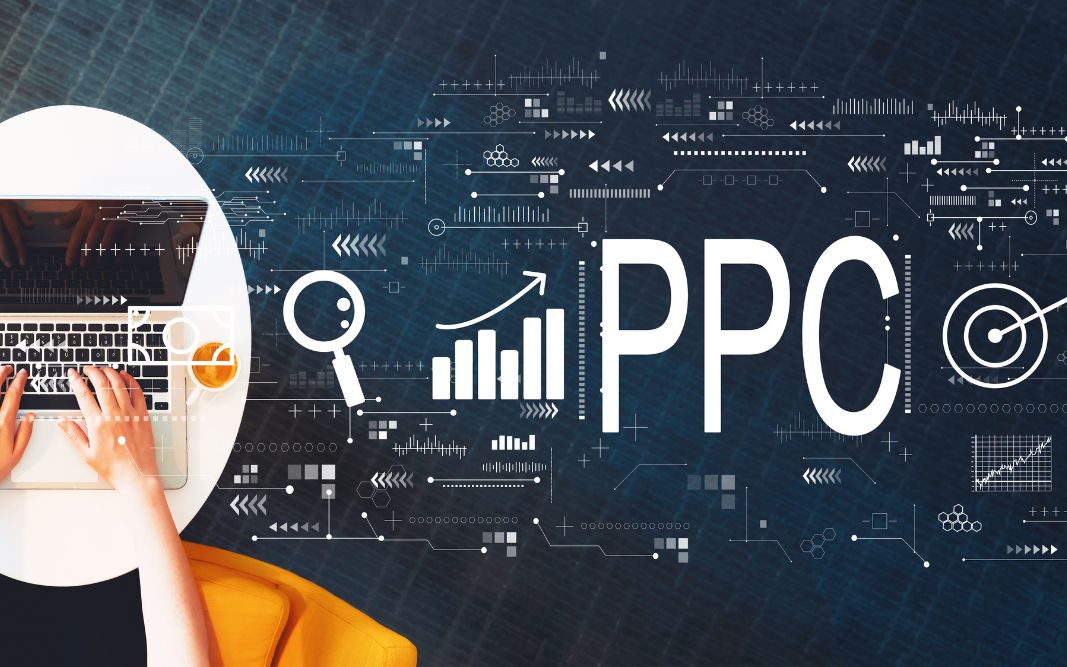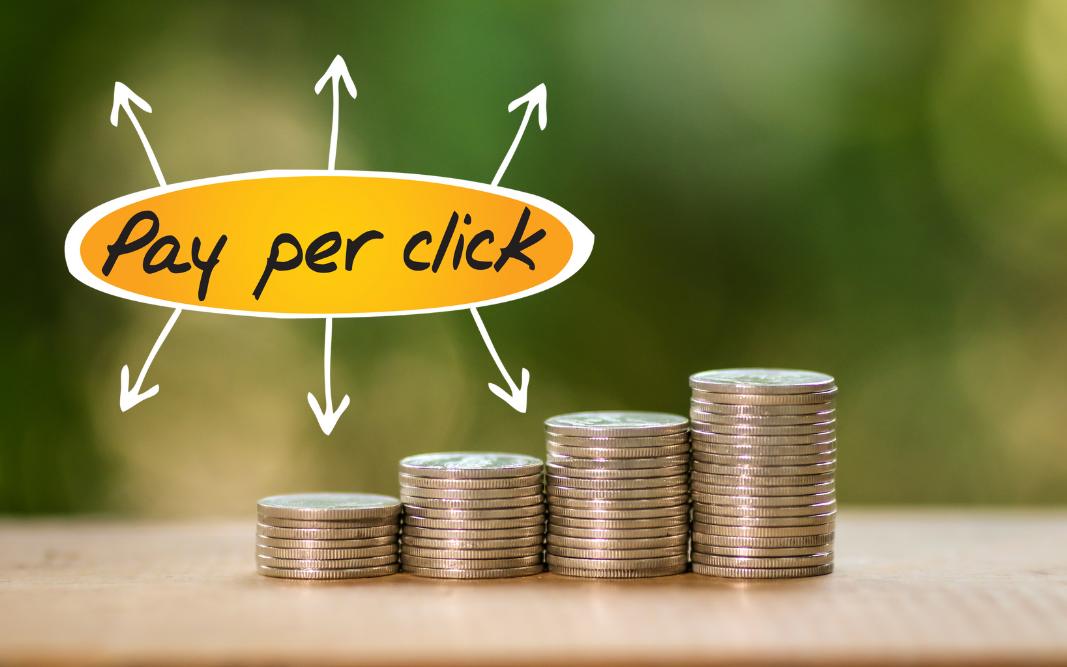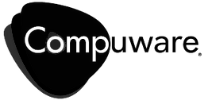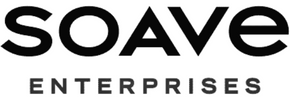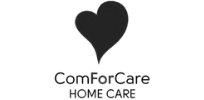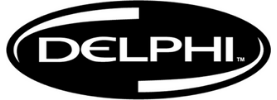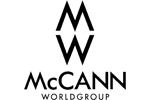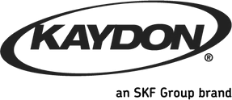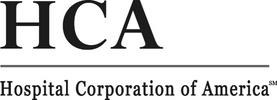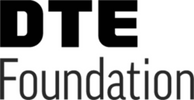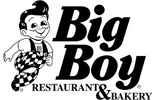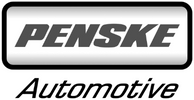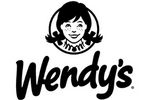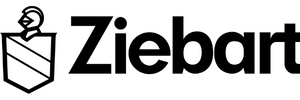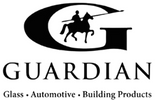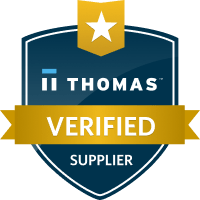
How Can a Pay Per Click Advertising Firm Actually Improve CRO?
Wouldn’t it be great if turning clicks into customers was as easy as flipping a switch? That’s kind of how people think Pay Per Click works—just run some ads, get traffic, and boom, conversions. But in reality, it’s not that simple. That’s where a Pay Per Click Advertising Firm steps in.
You see, PPC isn’t just about getting people to click—it’s about getting the right people to click, and more importantly, to convert. And that’s where CRO (Conversion Rate Optimization) comes into play. The tricky part? Many businesses treat PPC and CRO as two separate things. But the truth is, the magic happens when both work hand in hand. A skilled Pay Per Click Advertising Firm doesn’t just bring in traffic; they fine-tune every part of the funnel to make sure that traffic turns into actual results—sales, sign-ups, or leads.
In this article, we’ll dive into how a Pay Per Click Advertising Firm can actually improve CRO — from ad design and targeting to landing page strategy and user behavior insights. Let’s break it down.
1. What Is Pay Per Click Advertising And How Do Agencies Perform It?
Pay Per Click (PPC) advertising is a digital advertising model where businesses pay a fee each time a user clicks on their ad. Instead of earning website visitors organically, through SEO or unpaid marketing, PPC allows you to buy visits by displaying ads across platforms like Google, Bing, YouTube, and social media networks (Facebook, LinkedIn, Instagram, etc.).
In PPC, you don’t want just clicks — you want valuable clicks that lead to conversions (leads, sales). That means the job of the advertiser is to filter out wasted traffic and focus on clicks that move the business forward. The most common PPC model is Google Ads, where advertisers bid on keywords — specific search phrases people use — to make their ads appear on search results pages. For example, if someone searches “best coffee near me,” a coffee shop can bid on that keyword and have its ad appear at the top of search results.
If a user clicks the ad, the coffee shop pays Google a small amount (maybe $1–$3 depending on competition).
If the user doesn’t click, the advertiser pays nothing.
This system gives advertisers control over their visibility, budget, and targeting — you decide how much you want to spend, who sees your ads, and when they appear.
2. The Goal of Pay Per Click Advertising Agencies:
At its core, PPC advertising aims to drive measurable actions that contribute to revenue.
These actions can include:
- Website visits
- Form submissions
- Product purchases
- App downloads
- Phone calls
Unlike traditional advertising (like billboards or TV), PPC provides real-time data that shows how each click contributes to your sales funnel. You can track exactly:
- How much each click costs
- How many clicks turn into leads or customers
- Which ads and keywords perform best
This data-driven approach allows businesses to constantly refine campaigns for better performance and higher returns.
3. How Pay Per Click Advertising Firms Work (Step-by-Step)?
Let’s break the process into simple, logical steps:
Step 1: Keyword Research
Advertisers identify keywords their potential customers use when searching for products or services. For example, a digital agency might target terms like “PPC management services” or “Google Ads expert.”
Step 2: Campaign Creation
The advertising firm sets up a campaign in a PPC platform (e.g., Google Ads).
They define:
- Budget (how much to spend daily or monthly)
- Target audience (location, demographics, device type)
- Ad groups (collections of related keywords and ads)
- Landing pages (where users go after clicking the ad)
Step 3: Bidding
Advertisers set a bid amount — the maximum they’re willing to pay for a click.
However, PPC platforms don’t just choose ads based on money; they also factor in ad relevance, quality, and expected performance.
This means a smaller advertiser with high-quality, well-optimized ads can still beat a large competitor who bids higher but has poor ad quality.
Step 4: Ad Auction & Display
When someone searches a keyword, an ad auction happens in milliseconds.
The system decides which ads to show and in what order — based on bid amount and ad quality.
Step 5: Tracking & Optimization
Once the ad is live, data starts coming in — clicks, impressions, conversions, cost-per-click (CPC), and conversion rate (CR).
Advertisers analyze this data and make ongoing adjustments:
- Pausing low-performing ads
- Testing new keywords
- Rewriting ad copy
- Adjusting bids for better ROI
This cycle of testing and optimization is what makes PPC so powerful and cost-efficient.
4. PPC Agency Benefits: Pros & Cons of Pay Per Click Advertising
PPC has both strengths and risks. Understanding them is key to using it smartly.
PPC Agency Pros:
- Measurability & Transparency: You can see exactly which ads, keywords, and placements are generating results. Every click, impression, and conversion can be tracked.
- Speed: Unlike SEO which can take months, PPC allows you to start seeing traffic and leads almost immediately.
- Retargeting / Remarketing: You can serve ads to people who have already visited your site — increasing conversion chances because they’re already familiar with you.
- Control: You decide budget, schedule, targeting, and bidding strategies — giving you flexibility and control over how your money is spent.
PPC Agency Cons / Challenges:
- Cost per click: You must pay for each click — if your campaign is poorly optimized, you could spend a lot for poor results.
- Complexity: Platforms like Google Ads have many settings, metrics, and moving parts. It’s easy to make missteps without expertise.
- Need for continuous optimization: You can’t “set it and forget it.” To keep ROI high, campaigns need ongoing management, testing, and refinement.
- Risk of wasted spend: If your targeting or creative is off, you might get many clicks that don’t convert — essentially losing money.
5. PPC Ads Agency Food Pyramid: Organizing Your Strategy
The “PPC food pyramid” is a metaphorical framework KlientBoost uses to describe all the layers and building blocks you need for a healthy PPC strategy. Just like a nutrition pyramid has foods at different levels, PPC has “serving categories” that combine to form a complete, balanced campaign.
Here are some top layers:
- Channels & Networks (6–11 servings): This covers which PPC channels you use — search, display, social, programmatic, etc. You must pick the right mix before anything else.
- Keyword + Targeting Options (infinite servings): Choosing which keywords, audiences, demographics, and placements to target.
- Ad Creation + Split Testing (infinite servings): Crafting various ad creatives and running A/B tests to see which works best.
- Landing Page & Conversion Optimization (2–3 servings): Ensuring your landing pages convert well — speed, clear call-to-action, relevance to the ad.
- Analytics, Scripts & Bidding (2–3 servings): Tracking results, using scripts or automation, optimizing your bids.
The idea is that you can’t skip foundational layers. If your targeting is great but your landing page is weak, your campaign fails. A real PPC strategy addresses each level.
6. PPC Channels + Networks Offered By Pay Per Click Advertising Firms
Let’s breaks down major PPC channel types you should consider:
i. Search Engine PPC
- Google Ads is the most dominant platform — you can target searches directly.
- Microsoft Advertising (Bing) is another option; sometimes lower cost per click and reaches certain demographics better.
- There are smaller search networks (DuckDuckGo, Yahoo, etc.) that are less dominant but useful in some niches.
ii. Social Media PPC
- Platforms like Facebook, Instagram, LinkedIn, Twitter.
- These don’t always use keyword intent, so targeting is based on demographics, interests, behaviors.
- Very useful for brand awareness, lead generation, and niche targeting.
iii. Display Advertising PPC
- Visual ads on websites and apps within display networks (e.g. Google Display).
- Good for retargeting, awareness, or reaching people not actively searching.
iv. Video PPC
- Ads on YouTube or other video platforms.
- Low cost per view in many cases; useful for storytelling and brand visibility.
v. Programmatic PPC
- Automated buying of ad placements using real-time bidding across multiple platforms.
- Helps scale campaigns intelligently with automation and data.
vi. Specialized PPC Types
- Pay Per Call / Call PPC: You pay when the ad prompts a phone call. Useful for businesses that rely on calls (e.g. local services).
- Content PPC / Native Ads: Promoting blog posts or content via PPC on publisher networks (e.g. Outbrain, Taboola) to amplify content reach.
- Affiliate or Commission PPC: Working with affiliates who promote your offers and you pay for conversions, not clicks.
7. How Do Agencies Drive Leads Growth Using Pay Per Click Advertising
The biggest misunderstanding about Pay Per Click (PPC) advertising is assuming that traffic equals success.
But in reality, success in PPC is about conversions — the number of people who take meaningful action after clicking (buying, signing up, requesting a quote, etc.).
A Pay Per Click Advertising Firm focuses on revenue-driven optimization. Instead of chasing vanity metrics like clicks and impressions, they refine every part of your campaign to generate measurable returns.
This means testing:
- Which keywords bring not just visitors, but buyers.
- Which ads attract clicks that actually convert.
- Which landing page layouts create the highest ROI.
That’s the difference between an average campaign and a high-performing one — and why businesses often partner with PPC agencies to manage this complex ecosystem.
8. Smartfinds Marketing Agency’s Strategic PPC Process
A professional Pay Per Click Advertising Firm doesn’t just run ads — it builds a complete strategy that connects research, targeting, creative, and data optimization.
Here’s what that process typically includes:
A. Audit & Research
The agency reviews your industry, competitors, and existing ad performance.
They analyze:
- Keyword opportunities and cost per click (CPC) trends
- Competitor ad copy and landing pages
- Seasonal or demographic demand shifts
This helps them build a data-driven foundation instead of guesswork.
B. Campaign Structure & Setup
Next comes designing the actual campaign structure. This includes:
- Segmenting campaigns by intent (awareness, consideration, conversion)
- Creating tightly themed ad groups with relevant keywords
- Writing ad copy variations for A/B testing
- Designing conversion-focused landing pages
- Setting bid strategies and daily budgets
Each part is engineered to maximize performance with minimal waste.
C. Ongoing Optimization
Once the campaign goes live, the work doesn’t stop.
Agencies continually monitor:
- Click-through rate (CTR)
- Cost per acquisition (CPA)
- Return on ad spend (ROAS)
- Conversion rate
They then tweak targeting, bids, or creatives accordingly.
This constant refinement is why professional PPC agencies outperform self-managed campaigns — they don’t wait for problems to appear; they prevent them with proactive data analysis.
9. How Pay Per Click Advertising Agency Boost Revenue?
Let’s go deeper into how a Pay Per Click Advertising Firm actually drives measurable business growth.
A. Advanced Targeting
They help you reach the right people — not just anyone searching.
Agencies use detailed targeting such as:
- Demographics (age, income, profession)
- Location-based targeting
- Device targeting
- Custom intent audiences (people actively searching for your type of product)
- Retargeting (re-engaging visitors who didn’t convert)
This precision prevents wasted clicks and improves conversion potential.
B. Conversion Rate Optimization (CRO)
Even a perfect ad fails if the landing page doesn’t convert.
A skilled PPC firm combines advertising and CRO by:
- Designing fast-loading, persuasive landing pages
- Using strong calls-to-action
- A/B testing form lengths, copy, and layout
- Aligning ad promise with landing page offer
This combination turns more of your paid clicks into paying customers — a key factor in improving ROI.
C. Data Tracking & Reporting
Every dollar is tracked through analytics tools like:
- Google Ads & Analytics
- Conversion tracking pixels
- Heatmaps & session recordings
- CRM integrations
With this data, agencies identify what’s working — and shift budgets accordingly.
That’s why PPC firms are revenue-driven: they rely on numbers, not assumptions.
10. PPC Agency’s Most Profitable Technique: Retargeting
“Retargeting is the ability to advertise directly to a user who has previously visited your site or clicked on one of your ads.”
It targets users who have already interacted with your brand but didn’t convert — for example, visitors who added something to their cart but didn’t complete checkout. By showing those users relevant ads again (perhaps with a discount or new offer), you stay top-of-mind and recover lost opportunities.
Retargeting or remarketing campaigns often deliver 2x–3x higher ROI compared to cold audience campaigns because these users already have brand awareness and intent.
11. The Relationship Between PPC and CRO
This is a crucial insight emphasized by KlientBoost and widely accepted in the digital advertising world:
Pay Per Click Advertising and Conversion Rate Optimization are two sides of the same coin.
- PPC brings traffic — CRO converts that traffic into customers.
- Without CRO, PPC is expensive traffic.
- Without PPC, CRO has no audience to test.
Successful agencies treat them as one ecosystem.
They don’t just ask, “How do we get more clicks?”
They ask, “How do we make every click count?”
12. Why Companies Hire a PPC Firm Instead of Doing It Themselves?
Managing PPC effectively requires technical expertise, creative skill, and analytical precision — a rare combination.
A Pay Per Click Advertising Firm typically brings:
- Certified experts in Google, Bing, and Meta Ads.
- Cross-industry experience to understand what works across markets.
- Dedicated design and copywriting teams to create optimized ad experiences.
- Access to premium tools (AI bidding, automation scripts, heatmaps, analytics).
- Time-saving management so business owners can focus on growth.
Essentially, a firm replaces guesswork with strategy — ensuring every dollar spent produces the highest possible return.
13. How Do Pay Per Click Advertising Firms Measure True PPC Performance?
A common beginner mistake is judging PPC success by surface-level metrics like clicks or impressions.
A Pay Per Click Advertising Firm focuses on business outcomes instead — how much revenue, profit, or pipeline growth those ads generate.
To measure that, agencies build dashboards that track:
- Return on Ad Spend (ROAS): How much revenue each ad dollar creates.
- Cost per Acquisition (CPA): The cost of getting one paying customer.
- Lifetime Value (LTV): How much each customer is worth over time.
- Conversion Rate (CVR): The percentage of visitors taking a desired action.
These numbers reveal which campaigns are profitable, which need improvement, and which should be paused.
That’s how agencies turn raw ad data into clear financial decisions — giving clients transparency and control.
14. Why Businesses See Higher ROI with a PPC Firm?
Hiring a Pay Per Click Advertising Firm isn’t an expense — it’s an investment multiplier.
Because such firms combine:
- Strategic research
- Advanced technology
- Conversion-focused design
- And measurable accountability
They turn every ad click into a potential customer and every campaign into a source of revenue intelligence.
Final Thoughts:
Pay Per Click Advertising is one of the most measurable and controllable growth systems in digital business — but only when executed with skill and precision. A PPC agency ensures that every keyword, ad, and landing page is aligned with a single goal: maximizing your ROI.
For a business aiming to scale faster, understand its audience better, and achieve predictable growth, partnering with an experienced PPC firm isn’t optional — it’s essential.
Visit smartfindsmarketing news for more articles like this.
FAQs:
1. How can a Pay Per Click Advertising Firm help improve my conversion rate?
A Pay Per Click Advertising Firm uses data-driven strategies to increase the number of visitors who take action on your website — whether it’s signing up, purchasing, or requesting a quote. By optimizing ad copy, targeting high-intent keywords, and refining landing pages, these firms ensure that every click has a higher chance of converting into a customer, improving your conversion rate optimization (CRO) over time.
2. What are Common PPC Advertising Mistakes Businesses Make Without an Agency?
Many businesses try PPC independently, but they often hit predictable roadblocks:
- Targeting too broad audiences → high spend, low conversions.
- Writing generic ad copy that fails to stand out.
- Sending traffic to weak homepages instead of dedicated landing pages.
- Ignoring negative keywords (which waste budget).
- Failing to track conversions properly.
A Pay Per Click Advertising Firm prevents these losses through expertise, structured workflows, and detailed testing — saving both money and time.
Author: Momna Baig

